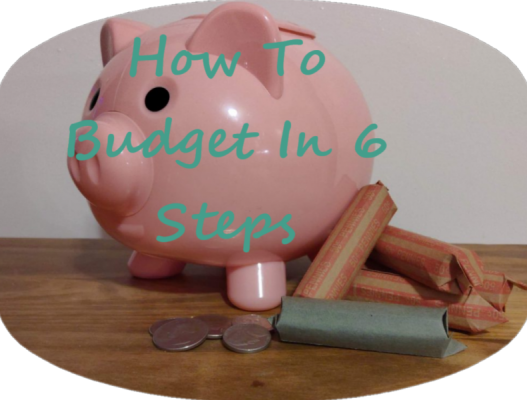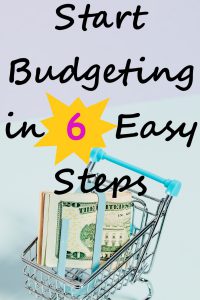
This is a detailed description of how I manage my family’s finances. I use google sheets to budget (it’s like excel), but please feel free to use what’s most comfortable for you. If what you’ve been using isn’t working for you I recommend trying google sheets. As you read through please be aware that I did NOT conquer my budget all at once, it was a process I built on and modified, and continue to change to meet the ever changing needs of my family. I focus on one or two steps at a time, and then move onto the next step when I feel ready.
If you are reading my experience to try out for yourself, please do not become overwhelmed with all the steps. Just start with reading and doing step 1, this might take you several days, weeks, or even a month depending on where you are in your life. After you feel comfortable with a step, start reading the next step. Go at a pace that’s right for you, it’s key to being able to successfully budget.
I hope the process I share helps to inspire you to gain more control over your finances through budgeting.
Many who begin at the same starting line finish at different destinations
Step 1: Set Expectations
Record your monthly income, and then subtract set monthly bills like rent, loan payments, and insurance from your monthly income. Next, write a list of categories you spend money on each month that are not set bills like groceries, entertainment, eating out, and gifts. Then give each category a monetary allowance you think is reasonable, trying to keep your total monthly expenses equal to or less than your monthly income. (Keep in mind your total may come out to be negative, that is OK, as you go through the process you can decide how to manage that negative)
Step 2: Make a list of all your purchases from the past month
I say one month to start with because that was a lot for me, but you may want to look at the past month or three based on what’s manageable for you. I rarely have cash so this compilation of purchases for me were all on-line in my bank account information, either in my checking account as bill pays and cashed checks or on my credit card transactions. Hopefully you have these transactions available somewhere convenient and not as a pile of receipts. If you do have a pile of receipts to track transactions consider moving your transactions on-line to more easily view and track transactions.
Step 3: Sort all your purchases from 1 month into categories
I started with the list of categories that I expected from step 1, then added to my categories as I came across expenses that didn’t fit into the original categories I had. Below is the final list of all the categories I had. If you find it overwhelming at first just start with the biggest expense categories that are easy to label and put everything else into a miscellaneous category until you are ready to separate them out.
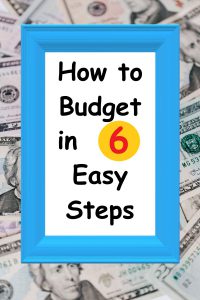
- Groceries (includes regularly used home products like dish soap, tissues, bleach, and paper towels)
- Gas
- Rent/Mortgage
- Electric
- Internet
- Cell Phone
- Gifts
- Home purchases (for example: decor, rakes, storage bins)
- Family (I buy stuff for my mom a lot so I decided this needed a category of its own)
- Entertainment
- Eating Out
- Children’s Activities (Sports and scouts)
- School Loans
- Car Payment
- School Support (Teacher’s gifts, class parties, etc.)
- Pet Purchases (We have sugar gliders)
- Drinks (This was tea and coffee from Starbucks for me
Step 4: Ask Yourself, Can I Eliminate Any Expenses? Then Eliminate Expenses
Take time to carefully examine your purchases and ask yourself, is there anything I can live without? Think about it, was there a time in your life when you lived without some of your purchases, are there people you know that live without your purchases, if so how do they do it, and can you also manage to live without the purchase?
This was a really hard step for me. I felt like everything was a need. I felt that I NEEDED to meet the expectations of society. I did this by giving gifts, going places to visit with others, and buying “stuff” for my convenience or immediate happiness.
To find the courage to eliminate purchases I had to read a lot of journeys that other individuals went through to eliminate expenses. I started small, first to go was Starbucks. I bought two travel mugs and made all my drinks at home, this did include drink mixes from starbucks like the refresher powder packs, but by not purchasing Starbucks on the go, we saved $20 a month. Next to get cut from my budget was eating out and ordering in. I told myself this was not an option, if we had something at home then we would work with it as opposed to spend more money. We brought snacks and water bottles with us when we knew we would be out running errands for a while. We packed peanut butter and jelly sandwiches for day trips, it wasn’t glamorous but it made a huge difference. Breaking the habit of eating out or ordering in saved our family $100 a month. Lastly, I started really questioning how much I was spending on gifts, and if the gifts were really necessary. I used to think $20 a person for a gift was very reasonable, but then I looked at the number of individuals I was purchasing gifts for and realized that does not work for my budget. So, I stopped buying gifts for coworkers and birthday gifts for extended family members.
Step 5: Next, determine what expenses I can reduce?
You’re making amazing progress, keep up the good work!
Stay strong and know you are on your way to saving more money.
Take a look at all your expense categories and ask, are there any expenses I can reduce? A great way to assess if you should reduce any categories is to compare your current category expense totals to the values for each category you created in Step 1 (the values you came up with that you thought were reasonable for each category, and within your monthly earnings). If your expense value for categories are higher than what you thought were reasonable in Step 1, now is the time to ask, where is the disconnect? Is it a basic need or is it an emotional need, or is it lack of understanding the market prices?

To help, here are some personal experiences of how I reduced expenses. The first expense I reduced was the grocery bill. I used to shop at multiple grocery stores for whatever my husband and I wanted. When we needed to pinch some pennies though, I committed to one grocery store, Aldi’s. By only going to one store to shop I wasn’t tempted to purchase specials going on at other stores, and kept within a pre-set budget at Aldi’s. By committing to one grocery store and a grocery budget, we saved $200 a month.
In addition to groceries I also reduced our expenses for holiday gifts by making gifts for some family members and teachers, this reduced our Christmas budget by at least $140 depending on how many individuals we make gifts for. The gift making has turned into a fun December tradition I do with my son, amazing mom and son bonding time. We also invite friends over to partake in gift making, and it’s all the more fun.
Lastly, I reduced our entertainment expenses and became very innovative in my social activities. For this expense I decided we wouldn’t go out for entertainment unless it was a super special event or we had a great deal, like groupon. So, I started browsing local outings on groupon regularly and was introduced to some really great local places. To really save money for entertainment I also started inviting friends over to our home instead of meeting out. If I asked them over for dinner or lunch I would ask that they bring a side dish to share, this made my life less stressful in the prep and reduced our entertainment budget by $100s every year.
Step 6: Continue to Monitor
The last step to budgeting is knowing that it is an on-going process. Budgeting is not something you do once and then forget about. I take breaks of course, but I always go back to Step 1 and check how much I am spending in each category. If I am overspending I go back to old routines like making homemade gifts, cutting out the eating out, and cutting out going out for entertainment.
Monitoring of my expenses is an activity that changed overtime in frequency. Everyone is different, so you will have to determine what the right frequency to monitor your expenses is. Below I describe my frequency to monitor expenses to help you get a sense of how frequently you might have to monitor, and how it changed overtime.
After doing Step 1 through 5 I was mentally exhausted, I had never done it before and my brain hurt. So, I took my new budget and implemented it for a month. After taking a one month break I went back to Step 1 and realized I sucked at sticking to all my goals, some just weren’t realistic for me. So, I made some edits and tried again.
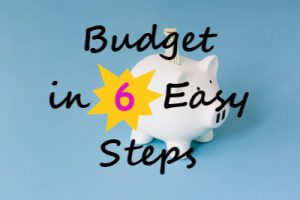
This time I started to monitor my expenses the next day, I monitored my daily expenses for a month. This task was frustrating for me, having to acknowledge how every expense impacted my family’s overall budget was mentally taxing. However, I learned so much from monitoring my daily expenses, I learned what categories I was struggling to stay in budget for almost immediately. I didn’t realize I was strategically eliminating those struggles, but I whined to my husband about them and it started a conversation that helped me better understand my emotional struggles with the category. My husband had great ideas to help alleviate some of my emotional attachment to categories, and also told me when I had to stop whining and suck it up. Let’s face it, we all need tough love sometimes.
After monitoring expenses daily for a month I made some more changes and tried again. I monitored expenses weekly this time, and was so excited that I barely had any expenses on a weekly basis, we had significantly reduced how much we were spending! I felt so good, so proud, we had made changes, and we would be less stressed financially as a result. My work was paying off. After this I started checking in on my expenses monthly to re-evaluate if I was staying within budget.
With monthly evaluations I found that my expenses varied by months, as logic should have told me at the beginning of my budgeting journey. Vacation time, holiday time, and the beginning and end of the school year were more expensive than all the other months. This made sense once I realized the correlations and I felt ridiculous for not considering these factors at the start of my budgeting journey, but hey it’s a learning process.
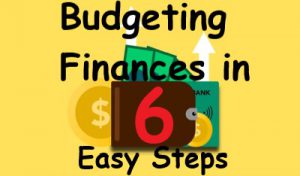
After identifying monthly differences I started categories for back to school, vacations, etc. I realized that some months I needed to save so I had enough money when it came to other months. So, I implemented changes again to my budget, and tried again. After this I continue to monitor my budget monthly, sometimes weekly. It’s gotten so much easier, and less stressful to look at all the numbers and categories.
It’s been six years since I started budgeting and clearly I could go on and on about what I’ve learned, but I think this is enough to get you started. Let’s not get overwhelmed, and focus on the fact that budgeting is a journey that will be on-going throughout your life. So whether it’s daily, weekly, monthly, quarterly, or annually check-in every now and then with your budget and see if there are improvements to be made.


